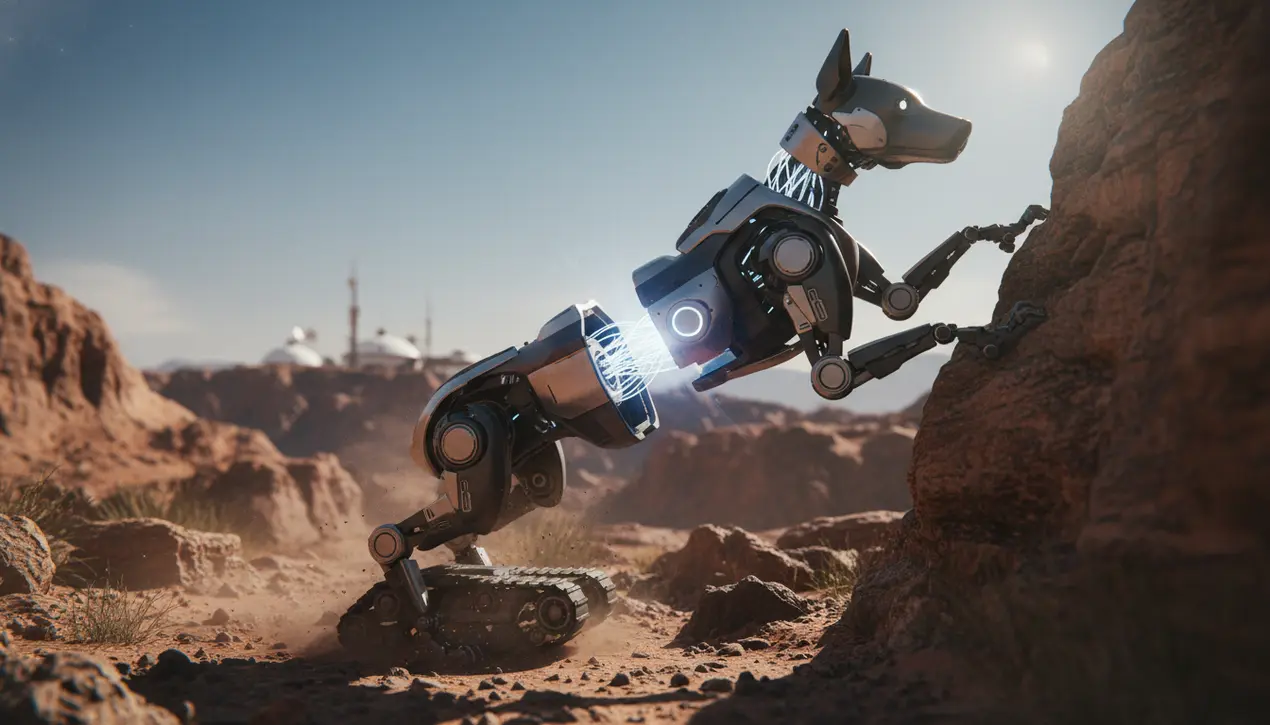
AIroboticsAutonomous Navigation
All-terrain modular dog-shaped robot splits and rejoins.
TH
Thomas Green
2 hours ago7 min read1 comments
In a development that feels ripped from the pages of a science fiction novel yet is unfolding in robotics labs today, engineers have unveiled an all-terrain, modular robot with a canine-inspired form factor that possesses the astonishing ability to split its body into two independent units and seamlessly rejoin them. This isn't merely an incremental step in robotics; it represents a fundamental shift toward truly adaptive and resilient machines.The platform, capable of navigating a dizzying array of terrains, operates as a cohesive four-legged unit for stability and speed, but when confronted with an insurmountable obstacle or a need for reconnaissance, it can perform a controlled fission, dividing into two two-legged devices. These halves can then operate autonomously, one perhaps rolling through a narrow pipe while the other climbs a sheer rock face, each employing a sophisticated suite of movements including walking, rolling, and climbing at variable speeds before finding their way back to each other for a magnetic or mechanical reunion.This capability is powered by advanced direct-drive technology, which eliminates traditional gears and reducers, offering unprecedented torque control and responsiveness crucial for such dynamic reconfiguration. The implications are cosmic.Imagine a future Mars rover, based on this very principle, that could split to explore a cave system from multiple angles simultaneously, dramatically increasing its scientific yield and operational redundancy. Closer to home, such robots could revolutionize disaster response, with one module navigating through rubble to locate survivors while its counterpart establishes a communication relay, their eventual rejoining ensuring a consolidated data download for rescue coordinators.This modular approach directly confronts one of the oldest dilemmas in robotics design: the trade-off between specialization and versatility. We've historically built robots for specific tasks—a snake robot for pipes, a tracked robot for rough ground.This dog-shaped modular system shatters that paradigm, embodying a new philosophy of 'swarm-to-self' intelligence, where a single entity can become a collaborative team and then re-integrate, a concept that echoes the modular spacecraft concepts once championed by visionaries like Gerard K. O'Neill.While the current prototype is a compelling proof-of-concept, the road ahead is paved with challenges, from refining the AI-driven coordination between the split modules to ensuring robust communication links in GPS-denied environments. Yet, the trajectory is clear. We are witnessing the embryonic stage of machines that can physically adapt to their environment in real-time, a leap that brings us closer to the sentient, shape-shifting technologies of our collective imagination and firmly plants the flag of human ingenuity on the next frontier of embodied artificial intelligence.
#featured
#robotics
#modular robot
#all-terrain
#autonomous navigation
#dog-shaped robot
#direct-drive technology
Stay Informed. Act Smarter.
Get weekly highlights, major headlines, and expert insights — then put your knowledge to work in our live prediction markets.
Related News
Comments
Loading comments...
© 2025 Outpoll Service LTD. All rights reserved.